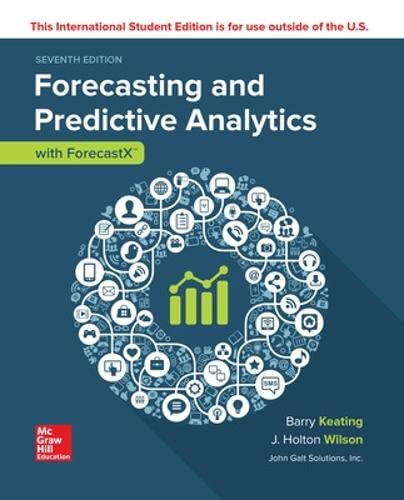Post Index:
It is very unlikely anyone could come to a proper forecast without a step-by-step approach. Forecasting is not a one-off incident but a well-established process. This process may itself vary from one company to the next. In a start-up or greenfield environment, the forecasting process may be a lot more concise than in a large, corporate setting. Either way, some model will be part of the forecasting process. Let’s have a look at the selection of forecasting models.
In the book Forecasting and Predictive Analytics with Forecast X, Barry Keating describes the overall forecasting process by means of 9 consecutive steps.
9 Steps of the Forecasting Process
- Specify objectives.
- Determine what to forecast.
- Identify time dimensions.
- Data considerations.
- Model selection.
- Model evaluation.
- Forecast preparation.
- Forecast presentation.
- Tracking results.
Choosing the Model for the Forecasting Process
Model selection, the fifth phase of our forecasting process, depends on several criteria, including:
- The pattern exhibited by the data
- The quantity of historic data available
- The length of the forecast horizon
The below table illustrates how these criteria relate to quantitative forecasting methods. All of these criteria are important, yet the type of data pattern is the most important. Such time series can display a wide variety of patterns when plotted over time. Displaying data in a time-series plot is an important first step in identifying various component parts of the time series. A time series is likely to contain some, or all, of the following components:
- Trend
- Seasonal
- Cyclical
- Irregular (often called random)
The trend in a time series is the long-term change in the level of the data. Seasonality refers to a pattern attached to a specific season, ie the Xmas sales in December. Cyclical fluctuations are of longer duration and are less regular than are seasonal fluctuations. Cyclical moves represent wavelike upward and downward movements of the data around the long-term trend. Irregular patterns are just what they sound like: there is no specific pattern: they occur at a haphazard or irregular pattern.
When forecasting a nation’s population for instance there may be a clear trend but no cycle and no seasonality. The Holt’s exponential smoothing or Linear regression trend may be the aptest forecasting models. The pattern in a nation’s number of total new houses sold has both a trend, seasonality and a cycle. Therefore, some likely candidate models for forecasting the total number of houses sold would include:
- Winters’ exponential smoothing
- Linear regression trend with seasonal adjustment
- Causal regression
- Time-series decomposition
Whilst data pattern is the most significant factor when choosing the appropriate forecasting model, other factors are of importance too. Think fo the availability of historical data as well as the forecast horizon. The below table acts as an easy instrument to help select the best forecasting model in your situation.
What are your key criteria and considerations when choosing the right forecasting model?
Additional Resources
John Galt’s solution ForecastX has over 20 forecasting methods built-in to the solution. ForecastX is in use by over 3,700 happy customers worldwide. Discover yourself what value ForecastX has to build better forecasts for better business.



